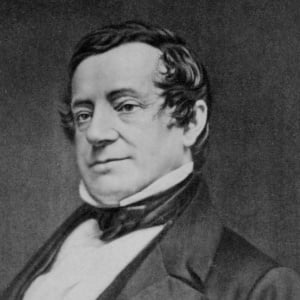Washington Irving Writes to Col. Thomas Aspinwall, His Literary Agent and the American Consul in London, Saying the “Sheets” for His Upcoming Book “The Adventures of Captain Bonneville” Are With His Publisher

He also details his efforts to get Mrs. Hawke’s Memoirs published
Both books were in fact published, “The Adventures of Captain Bonneville” in 1837 and the “Memoirs of Mrs. Hawkes, late of Islington” in 1840
Washington Irving was an American short-story writer, essayist, biographer, historian, and diplomat of the early 19th century. He is best known for his short stories “Rip Van Winkle”...
Both books were in fact published, “The Adventures of Captain Bonneville” in 1837 and the “Memoirs of Mrs. Hawkes, late of Islington” in 1840
Washington Irving was an American short-story writer, essayist, biographer, historian, and diplomat of the early 19th century. He is best known for his short stories “Rip Van Winkle” and “The Legend of Sleepy Hollow” and his historical biographies.
Autograph Letter Signed, New York, August 7, 1837 to “My dear Aspinwall” who would be Colonel Thomas Aspinwall, Irving’s literary agent in London, concerning finding a publisher for a friend’s book. “As I found it impossible to get a publisher for Mrs. Hawke’s Memoirs in this city I got my booksellers to send it to a house in Boston, the most likely to undertake a work of the kind. After much delay I find, on coming to town, the subjoined [not present] letter to my booksellers which you will perceive declines the publication. I do not think there is a bookseller to be found in the United States at this moment who would venture to publish the work at his own risk, even though he were allowed all the profits that might accrue. The trade for the present is almost at a stand. The sheets of the work remain in the hands of my booksellers, Messrs. Wiley & Putnam, subject to order, but there is no prospect of anything being done. With kindest remembrances to Mrs. Aspinwall and the young ladies I am, my Dear Colonel, yours &c”
The book in question was undoubtedly “Memoirs of Mrs. [Sarah] Hawkes late of Islington Including Remarks in Conversation and Extracts from Sermons and Letters of Rev. Richard Cecil,” by Catherine Cecil. It was published in England in 1837 with a second edition the next year and a 3rd edition published in 1840 by Washington J. Simon of Philadelphia.
The “sheets” Irving mentions were probably his book “The Adventures of Captain Bonneville,” published in 1837. In his book, Irving chronicled the exploits and adventures of Captain James Bonneville, one of the earliest explorers of the American West, detailing his various journeys with mountain man Joseph Rutherford Walker; their discovery of Yosemite, Walker Pass, and the Bonneville Salt Flats; and life among the Native Americans and trappers of the West.

Frame, Display, Preserve
Each frame is custom constructed, using only proper museum archival materials. This includes:The finest frames, tailored to match the document you have chosen. These can period style, antiqued, gilded, wood, etc. Fabric mats, including silk and satin, as well as museum mat board with hand painted bevels. Attachment of the document to the matting to ensure its protection. This "hinging" is done according to archival standards. Protective "glass," or Tru Vue Optium Acrylic glazing, which is shatter resistant, 99% UV protective, and anti-reflective. You benefit from our decades of experience in designing and creating beautiful, compelling, and protective framed historical documents.
Learn more about our Framing Services








































































































